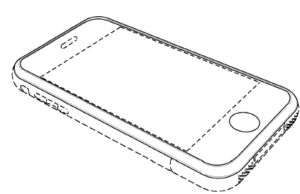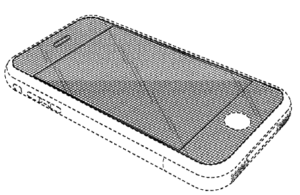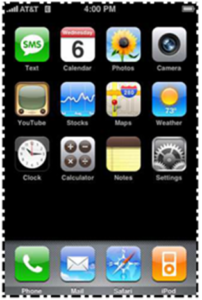Another Bite at the Apple…Maybe?
Supreme Court Reverses and Remands to the Federal Circuit
By Steve Chang and Richard Stockton
Less than two months after oral argument, the U.S. Supreme Court released its much-anticipated decision in Samsung v. Apple (Case No. 15-777). But it does not seem as significant as expected.
Background
In 2012, a California jury found that several of Samsung’s smartphones infringed several of Apple’s iPhone design patents, and ultimately $399 million — the entirety of Samsung’s profits on the accused smartphones — was awarded to Apple. This “total profit” award arose from Section 289 of the Patent Act, which states that
Whoever during the term of a patent for a design . . . , (1) applies the patented design, or any colorable imitation thereof, to any article of manufacture for the purpose of sale . . . shall be liable to the owner to the extent of his total profit, but not less than $250 . . . .”
35 U.S.C. § 289 (emphasis added).[1] The design patents-in-suit, namely U.S. Patent Nos. D593087, D618677, and D604305, relate to the following elements of Apple’s iPhone product:
D593,087
D604,305
On appeal, Samsung argued that this “total profits” award was improper because the patented designs only covered a fraction of the features of the iPhone, but the Federal Circuit affirmed the award based on the language in the statute, and the Supreme Court granted certiorari.
At the Supreme Court, the “Article of Manufacture” and “Total Profits” Were Addressed
In briefing and oral argument at the Supreme Court, the parties and the United States as amicus curiae addressed how to identify the “article of manufacture,” and also how to determine total profits based on the article of manufacture.
There were several suggestions for the analysis, including a two-part test for the overall analysis (identify the article of manufacture and then determine the amount of profit attributable to that article of manufacture). There was also discussion of a four-factor analysis to do that (i.e., looking at the claimed design, its prominence in the product, whether the design is “conceptually distinct” from the product as a whole, and the physical relationship between the design and the rest of the product). There was discussion of the role of expert witnesses, and on how you might consider the manner in which the design was developed (e.g., a “flash of genius” versus a long drawn-out design process) in deciding on the profits attributable to that design.
All of this discussion had the design patent legal community eagerly anticipating detailed guidance on how “total profits” should be tabulated, what factors were to be considered (e.g., 2-part test with 4 factors?), and what evidence was to be offered.
However, in the decision, the Supreme Court declined to resolve the case on the merits, establish a test or even identify relevant factors. Instead, it merely said that the Federal Circuit “reading ‘article of manufacture’ in §289 to cover only an end product sold to a consumer gives too narrow a meaning to the phrase,” and reversed. Id.
Conclusion
The takeaway from the Supreme Court decision is simple: the “article of manufacture” may be a component of a product sold to a consumer, regardless of whether the component is sold separately or not. However, because the Supreme Court did not provide further guidance (and said that a test “is not necessary to resolve the question presented in this case”), it seems the Federal Circuit has considerable leeway on how to proceed. Accordingly, it seems the issues presented have been punted to the Federal Circuit, and we will have to see what happens on remand.
Please click here to read the opinion.
Please click here to download a printable version of this article.
[1] Apple also asserted infringement of trade dress and other patents, but these matters were not before the Supreme Court.
Posted: December 7, 2016







